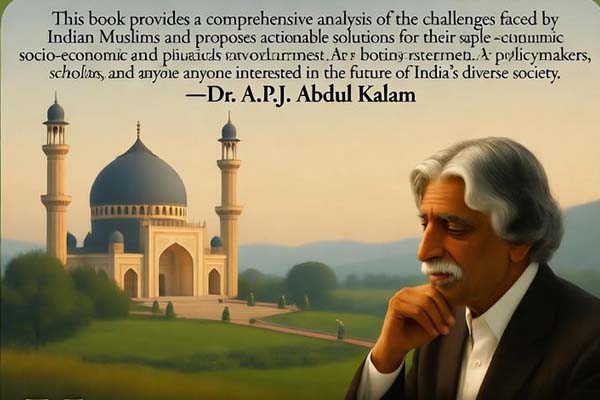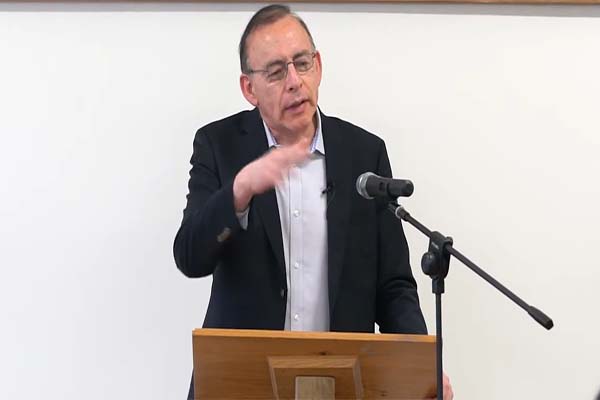 Najmuddin A. Farooqi.
Najmuddin A. Farooqi.
At first glance, the phrase “Smile, you had a heart attack” may seem jarring or even inappropriate. But for those entering the chamber of one of India’s most celebrated cardiologists Padma Bhushan Dr. Ashok Seth, Chairman of Fortis Escorts Heart Institute these words carry a deeper message: survival is possible and with timely medical care, recovery can lead to a healthier, more mindful life.
Dr. Seth, a pioneer in Transcatheter Aortic Valve Replacement (TAVR) and interventional cardiology in India, uses this phrase to emphasize that a heart attack (or Myocardial Infarction, MI) is not necessarily a death sentence. Immediate intervention, followed by the right treatment, lifestyle changes, medication, and follow-up care, can not only save lives but also significantly improve long-term outcomes.
Heart Disease Doesn’t Wait for Age
One of the most dangerous misconceptions about heart disease is that it only affects the elderly. In reality, the seeds of heart conditions especially Coronary Artery Disease (CAD) are sown early, often beginning with atherosclerosis, the buildup of fat and cholesterol on artery walls.
Many younger people ignore early warning signs, assuming they’re “too young” for heart issues. However, risk factors like poor diet, smoking, sedentary lifestyle, stress and genetic predisposition accelerate this buildup. Damaged arteries, whether due to hypertension, diabetes or smoking, are more vulnerable to rupture and clot formation, leading to a heart attack.
Surprisingly, up to 90% of heart attacks can be attributed to modifiable factors. According to research, individuals who avoid high cholesterol, smoking, diabetes, high blood pressure and obesity have just a 5% risk of cardiovascular disease by age 95, compared to a 69% risk in those with two or more of these risk factors.
Key Risk Factors for Heart Disease
Understanding and mitigating risk factors is the first step in preventing heart attacks:
Age (risk increases with age)
Gender (men are more prone, postmenopausal women also at risk)
Family history of heart disease
Smoking, a major contributor to artery damage
Hypertension
High cholesterol levels
Type 2 diabetes
Obesity and physical inactivity
Mental stress
High triglycerides
Excessive alcohol consumption
Autoimmune conditions like rheumatoid arthritis
Prevention Starts Early
Heart disease prevention isn’t just about medication. It starts with long-term lifestyle modifications:
Quit smoking
Manage blood pressure, diabetes and cholesterol
Adopt a heart-healthy diet: low in fat and salt, rich in fruits, vegetables and whole grains
Stay physically active
Maintain a healthy weight
Control stress through mindfulness, therapy, or relaxation techniques
Recognizing Symptoms Early
Knowing the symptoms of a heart attack can make the difference between life and death. Classic warning signs include:
Chest pain or discomfort (pressure or tightness in the center or left side of the chest)
Pain radiating to the back, jaw, neck, or left arm
Shortness of breath
Nausea or vomiting
Sweating
Fatigue, especially after minimal exertion
Anxiety or a sense of impending doom
Important, angina (chest pain due to reduced blood flow) usually subsides with rest, while heart attack symptoms persist or worsen.
When to Seek Help
If you suspect a heart attack:
Immediately call emergency services (112/102 in India or local helpline)
Chew and swallow aspirin, if available, unless contraindicated
Take prescribed nitroglycerin or beta blockers, if advised
Rush to a hospital with cardiac care facilities
Avoid self-driving; ask someone to take you
Diagnosis and Testing
Doctors may order a variety of tests to confirm or rule out a heart attack:
Electrocardiogram (ECG): Detects abnormal heart rhythms or signs of previous attacks
Holter Monitor: 24-hour ECG to track heart activity during normal daily routines
Echocardiogram: Ultrasound to assess heart function
Treadmill Stress Test (TMT): Monitors ECG changes during exercise
Thallium Stress Test: A nuclear scan showing blood flow to heart muscles during stress
Coronary Angiography (Cardiac catheterization): A dye-based X-ray procedure to identify blocked or narrowed arteries
Treatment Options
Initial treatment always includes lifestyle modifications. Depending on the severity, cardiologists may recommend one of the following:
A. Angioplasty (PTCA)
A balloon-tipped catheter is threaded into the blocked artery. Inflation compresses plaque against the walls, improving blood flow. Often, a drug-eluting stent is placed to keep the artery open long-term.
B. Coronary Artery Bypass Grafting (CABG)
In severe cases with multiple blockages, surgeons bypass the blocked arteries using vessels from elsewhere in the body. Minimally invasive options exist, requiring smaller incisions and offering faster recovery.
C. Enhanced External Counterpulsation (EECP)
A non-invasive therapy that enhances blood flow by applying pressure to the lower limbs. It’s suitable for patients with angina who are not candidates for angioplasty or bypass surgery, or for those with recurring symptoms post-treatment.
Post-Treatment Care
Recovery doesn’t end with surgery or discharge. Ongoing care is crucial:
Follow dietary restrictions
Engage in regular, moderate exercise
Lose excess weight
Manage mental stress
Take prescribed medications:
Antiplatelets
Statins
Beta blockers
Diuretics
Niacin and fibrates
Smoking cessation is non-negotiable nicotine constricts blood vessels, and carbon monoxide reduces oxygen in the blood.
A Word of Caution and Financial Planning:
Always consult a qualified cardiologist. If an interventional procedure like angioplasty or bypass is recommended, seek a second opinion. In some cases, conservative or non-invasive treatments may be more appropriate.
Given the rising cost of cardiac care, it’s wise to invest in a comprehensive health insurance plan, with coverage for all family members including parents and in-laws ensuring financial preparedness in emergencies. Senior citizens of 70 and above must get them registered in “Ayushman Bharat Pradhan Mantri Jan Arogya Yojana (AB PM-JAY)” which provides health coverage upto 5 lacs.
In Conclusion
Surviving a heart attack is no longer a miracle it’s a medical possibility with the right response and care. As Dr. Ashok Seth’s slogan reminds us: “Smile, you had a heart attack” because it could be a turning point an opportunity to embrace a healthier, more conscious life.



